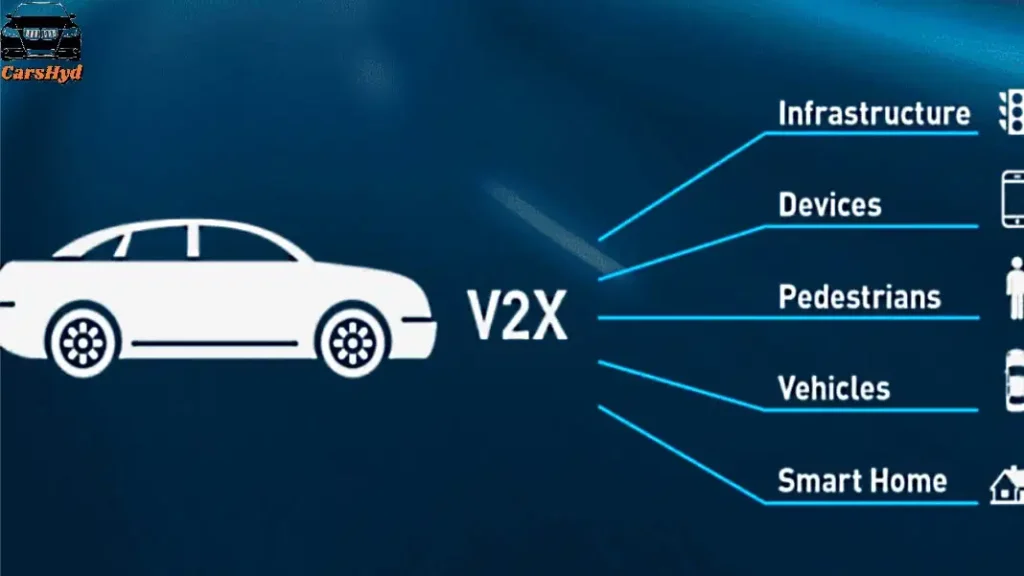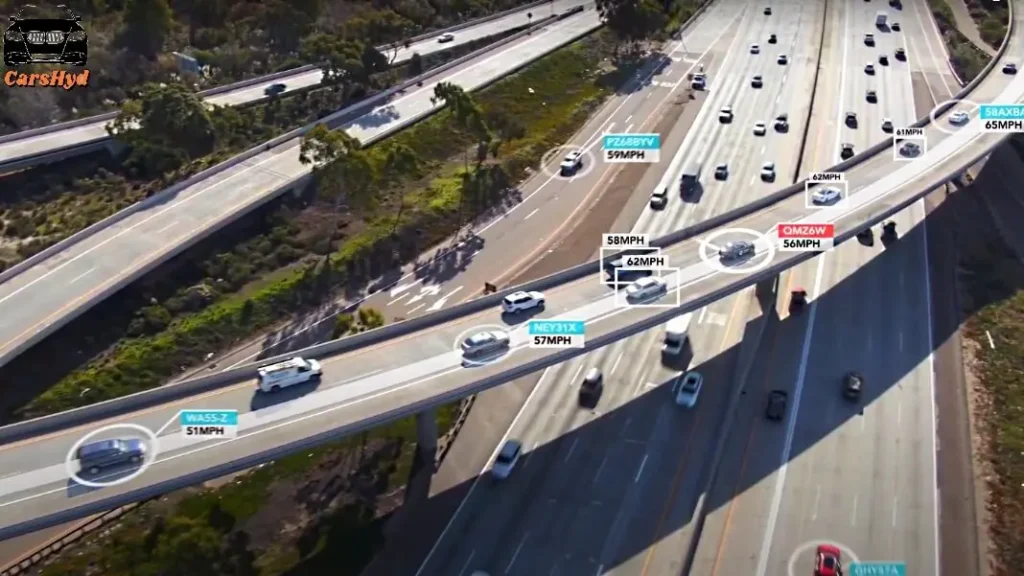Table of contents
Overview
In today’s rapidly advancing automotive world, Vehicle-to-Everything (V2X) technology stands out as a revolutionary development with the potential to transform transportation. By enabling vehicles to communicate seamlessly with their surroundings, V2X technology aims to improve safety, efficiency, and the overall driving experience. This comprehensive overview will explore the fundamentals of V2X technology, its various applications, benefits, challenges, and future prospects.
What is Vehicle-to-Everything (V2X) Technology?

Vehicle-to-Everything (V2X) technology is an advanced communication system that allows vehicles to exchange information with various elements of their environment. This includes other vehicles (Vehicle-to-Vehicle or V2V), infrastructure (Vehicle-to-Infrastructure or V2I), pedestrians (Vehicle-to-Pedestrian or V2P), and the broader network (Vehicle-to-Network or V2N). The primary aim of V2X is to create a connected ecosystem where real-time data sharing leads to safer and more efficient roads.
Key Components of V2X Technology:

- Vehicle-to-Vehicle (V2V) Communication: V2V communication enables vehicles to share data regarding their speed, location, and direction with each other. This exchange of information helps in preventing collisions and improving traffic flow. For instance, if a car suddenly brakes, vehicles behind it can receive a warning and take appropriate action.
- Vehicle-to-Infrastructure (V2I) Communication: This component allows vehicles to communicate with road infrastructure such as traffic signals, road signs, and parking meters. V2I communication helps optimize traffic management by providing vehicles with real-time information about traffic light changes, road conditions, and construction zones.
- Vehicle-to-Pedestrian (V2P) Communication: V2P communication involves interactions between vehicles and pedestrians. This technology aims to enhance pedestrian safety by alerting drivers to the presence of pedestrians at crosswalks and vice versa, thereby reducing the risk of accidents.
- Vehicle-to-Network (V2N) Communication: V2N communication connects vehicles to external networks, enabling them to access a wide range of real-time information, including traffic updates, weather conditions, and road closures. This helps drivers make informed decisions and plan their routes more effectively.
The Evolution of V2X Technology

V2X technology has undergone significant evolution over the past decade. Initially, the focus was on Vehicle-to-Vehicle (V2V) communication, but advancements have expanded the scope of V2X to include a variety of interactions. The integration of 5G technology has further accelerated these developments, offering higher data transfer speeds and reduced latency.
Historical Milestones in V2X Technology:
- Early Research (2000s): The early 2000s saw the inception of research into V2V communication, focusing on its potential to enhance road safety by enabling vehicles to share critical information about their movements.
- Pilot Programs (2010s): During this period, several pilot programs were launched to test V2X systems in real-world scenarios. These trials provided valuable insights into the technology’s effectiveness and its integration with existing infrastructure.
- Commercial Deployment (2020s): The 2020s marked the beginning of wider adoption of V2X technology, with several manufacturers and cities implementing commercial solutions. This period also witnessed the integration of 5G technology, which enhanced V2X communication capabilities.
Benefits of V2X Technology

The implementation of V2X technology offers numerous benefits that contribute to a safer and more efficient transportation system. Here are some key advantages:
- Enhanced Safety: One of the most significant benefits of V2X technology is its impact on road safety. By allowing vehicles to share real-time information about their movements, V2X technology helps prevent collisions and reduces accident rates. For example, if a vehicle in front suddenly brakes, the vehicles behind it can receive a warning and take appropriate action to avoid a crash.
- Improved Traffic Management: V2X communication with traffic signals and infrastructure helps optimize traffic flow, reducing congestion and minimizing delays. Vehicles can adjust their speed and route based on real-time data, leading to smoother traffic flow and reduced travel time.
- Increased Efficiency: V2X technology enables vehicles to operate more efficiently by providing real-time information about road conditions and traffic. This leads to better route planning, reduced fuel consumption, and lower emissions.
- Better Environmental Impact: By reducing idling and optimizing driving patterns, V2X technology contributes to a smaller environmental footprint. Fewer traffic jams and smoother driving contribute to lower greenhouse gas emissions and improved air quality.
- Enhanced Driver Experience: With access to real-time information about road conditions and traffic, drivers can make more informed decisions, leading to a more comfortable and enjoyable driving experience.
Applications of V2X Technology

V2X technology has a wide range of applications, each contributing to a more connected and efficient transportation system. Here are some notable applications:
| Collision Avoidance | V2V communication allows vehicles to detect potential collisions and alert drivers or automatically take corrective actions. For example, if two vehicles are approaching an intersection simultaneously, V2V technology can provide warnings to both drivers, helping them avoid a potential crash. |
| Traffic Signal Optimization | V2I communication enables vehicles to coordinate with traffic signals, reducing waiting times at intersections and improving traffic flow. Vehicles can receive information about upcoming signal changes and adjust their speed accordingly, minimizing delays. |
| Pedestrian Safety | V2P communication enhances safety for pedestrians by alerting drivers to their presence and vice versa. This is particularly useful at crosswalks and busy urban areas where pedestrian-vehicle interactions are frequent. |
| Real-Time Traffic Updates | V2N communication provides drivers with up-to-date information about traffic conditions, road closures, and weather. This helps drivers make informed decisions about their routes and avoid potential disruptions. |
| Emergency Response | V2X technology enables faster communication with emergency services, improving response times in critical situations. For example, if a vehicle is involved in an accident, V2X technology can immediately notify emergency responders, leading to quicker assistance. |
Challenges and Solutions
Despite its numerous benefits, V2X technology faces several challenges that need to be addressed for successful implementation. Here are some key challenges and potential solutions:
- Infrastructure Compatibility: Integrating V2X technology with existing infrastructure can be complex and costly. Solutions include gradual upgrades to infrastructure and public-private partnerships to share the costs and responsibilities of implementation.
- Data Security: Ensuring the security of the data exchanged between vehicles and infrastructure is crucial. Implementing robust encryption and cybersecurity measures is essential to protect against potential threats and ensure the privacy of users.
- Standardization: The lack of standardized protocols can hinder the widespread adoption of V2X technology. Industry collaboration and standard-setting organizations play a key role in developing and implementing universal standards that facilitate interoperability between different systems.
- Public Acceptance: Gaining public trust and acceptance of V2X technology requires education and awareness campaigns. Highlighting the technology’s benefits and addressing concerns about privacy and security can help increase public support.
- Cost: The initial cost of implementing V2X technology can be high. Governments and industry stakeholders must explore funding options, incentives, and subsidies to make the technology more accessible and affordable.
Future Prospects
The future of V2X technology is promising, with ongoing advancements and innovations shaping its evolution. Here are some key trends and developments to watch:
- Integration with Autonomous Vehicles: V2X technology will play a crucial role in the development of autonomous vehicles. By providing essential real-time data, V2X technology will help autonomous vehicles navigate complex driving environments safely and efficiently.
- 5G and Beyond: The continued rollout of 5G networks will enhance V2X communication capabilities. Higher data transfer speeds and reduced latency will improve the performance of V2X systems and enable new applications.
- Global Expansion: As V2X technology matures, its adoption is expected to expand globally. International collaboration and standardization will contribute to the development of more connected and efficient transportation systems worldwide.
- Enhanced Applications: Future applications of V2X technology will include advanced features such as vehicle platooning. In vehicle platooning, multiple vehicles travel in a coordinated manner, improving efficiency and safety.
- Collaboration and Partnerships: Ongoing collaboration between automotive manufacturers, technology providers, and government agencies will drive the development and implementation of V2X technology. Partnerships will help address challenges and accelerate the adoption of V2X systems.
Conclusion
Vehicle-to-Everything (V2X) technology represents a significant leap forward in automotive communication systems. By enabling vehicles to interact with their surroundings, V2X technology promises to enhance safety, efficiency, and overall driving experience. Despite the challenges, the future of V2X technology looks bright, with ongoing advancements and innovations paving the way for a more connected and intelligent transportation ecosystem.





















